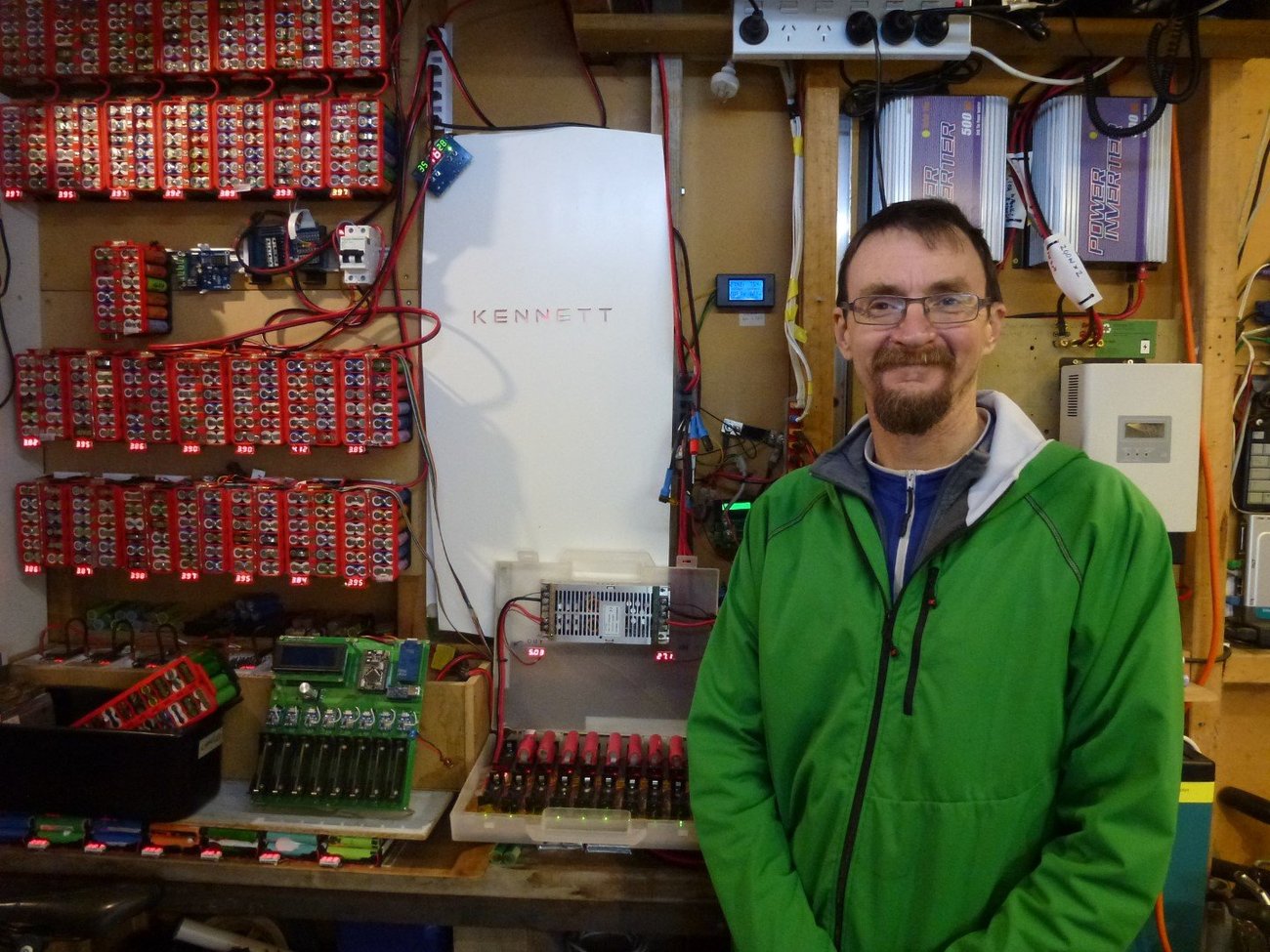Meet the man harvesting laptop batteries to make power walls to charge his home

By day, Kennett runs a book publishing business alongside his brothers – Jonathon and Simon – devoted to cycling guidebooks and designing mountain bike tracks around the Greater Wellington region. Since 1991, the siblings have pedaled the family business, having set up the mighty Karapoti Classic, which is the longest-running mountain bike event in Australasia, and cycled through the publishing headwinds in brotherly unison. “We’ve done it all” Kennett tells me, before he reminisces on the time he got his hands on one of New Zealand’s first imported mountain bikes.
While his efforts in the cycling department are gallant, it’s his battery-ridden workshop in Lower Hutt that piques particular interest. It’s here that lies his impressive chest of battery packs and power walls made up of approximately 1848 old laptop batteries.
The process sees him collect laptop batteries from local recyclists, before he runs a series of tests to ensure that he is left with the good cells. He then attaches 24 cells together to make one big monster battery cell, strings these in series to make a 1kWh power-wall, and finally joins a bunch of these 1kWh powerwalls together to help run his house. The battery packs store energy from solar panels. In turn, it manages to power his house 24/7 in summer from solar PV panels on the roof, and has the potential to top-up his Nissan Leaf electric car.
Kennett says, “At the moment I have solar panels charging all of these batteries, I run the house lights and the workshop with this system. I have tried recharging the car but the Nissan Leaf is a 24kWh, and I only have a 10kWh powerwall.
“I either need a lot more powerwall – which is possible – or the other project that I am more likely to do is build a battery pack to put in the boot of the Nissan Leaf so I can add an extra battery to the Nissan Leaf that will run in parallel with the main pack to extend the range.”
Kennett admits the process is fairly arduous and takes a certain level of passion, and patience, to pull off. He explains the most dangerous part is ripping the laptop batteries open to test the battery cells, and advises participants to wear gloves.
“At the recycler these days I have to buy them. Once I have a bunch of laptop batteries, I rip them open and inside there is usually six cells known as 18650’s – slightly larger than an average AA battery – then you separate those and then charge them up, if they charge they move onto the next stage of testing how much capacity is left in them.”
In terms of cost, Kennet forks out $100 for approximately 50 laptop batteries. So, while it’s relatively cheap, it takes time. And Kennett assures, “If i had the money I would have bought a commercial system, which would have been easier, but less fun.”
Kennett is particularly keen on the 18650 rechargeable lithium-ion battery, which are used in most laptop battery packs, and are more suited to generate power walls. Concerningly, Kennett estimates that 70 percent of the recycled batteries are good cells, which means that most electronics become obsolete before the battery dies. Thus, leaving an insatiable pile of wasted batteries.
“This is one of the things that motivates me, there are all these lithium batteries that are perfectly good, they just need to liberated from the waste stream.”
“A power wall is a great second life for a lithium battery. Because it runs gently, as opposed to the a cell phone where you run the battery flat and it gets stressed and knackered. The power wall suits better because you can run steadily on 60 or 70 percent.”
Furthermore, Kennett has a grand vision, to see all batteries have a second life – or at least be recycled appropriately. He believes, “there should always be somebody utilising disregarded batteries.” So to get the word out, he takes to YouTube.
The homemade videos have received a strong level of support, and since, he has managed to build a cohort of like-minded tinkerers located on the outskirts of Wellington.
“Unfortunately, I have generated my own competition in the market for used batteries. But that is a good thing – it means the recycles have an incentive to commit them, and there is a steady stream of people buying them.”
Asked how the festival went, Kennett explains, “I was talking non-stop from 10am to 4pm, I had two friends with me at the table, I spread out the power wall stuff I had made and brought in some laptop batteries to show people the stages of taking used laptop batteries and making a power wall. I also printed out some resources for people who want to do it for themselves.”




